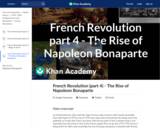
The rise of Napoleon Bonaparte. Created by Sal Khan.
- Subject:
- History
- Material Type:
- Lesson
- Provider:
- Khan Academy
- Provider Set:
- Khan Academy
- Author:
- Sal Khan
- Date Added:
- 07/15/2021

The rise of Napoleon Bonaparte. Created by Sal Khan.

In the 1600s, French and Dutch settlers in North America took a very different approach to colonization than their English or Spanish counterparts. In this video, Kim examines the trading relationships that French and Dutch settlers established with Native Americans in North America and how colonial goals affected patterns of settlement.
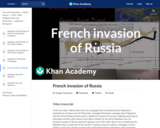
Napoleon's disastrous invasion of Russia. Created by Sal Khan.
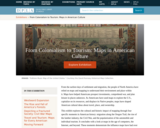
From the earliest days of settlement and migration, the people of North America have relied on maps and mapping to understand their environment and place within it. Maps have helped Americans prospect investments, comprehend war, and plan leisure in places unknown. As Americans have used maps to explore the U.S., capitalize on its resources, and displace its Native peoples, maps have shaped American cultural ideas about travel, place, and ownership. This exhibit explores the cultural and historic impact of mapping through four specific moments in American history: migration along the Oregon Trail, the rise of the lumber industry, the Civil War, and the popularization of the automobile and individual tourism. It concludes with a look at maps in the age of computers, the Internet, and beyond. These moments demonstrate the influence maps have had over how Americans imagine, exploit, and interact with national geographies and local places. This exhibition was created as part of the DPLAs Digital Curation Program by the following students in Professor Helene Williams's capstone course at the Information School at the University of Washington: Greg Bem, Kili Bergau, Emily Felt, and Jessica Blanchard. Additional revisions and selections made by Greg Bem.
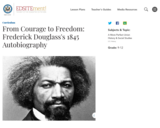
In 1845 Frederick Douglass published what was to be the first of his three autobiographies: the Narrative of the Life of Frederick Douglass, an American Slave, Written by Himself. As the title suggests, Douglass wished not only to highlight the irony that a land founded on freedom would permit slavery to exist within its midst, but also to establish that he, an American slave with no formal education, was the sole author of the work.

What was it like for hunter-gathers? What were their favorite foods that they would go the extra mile to get their hands on? How are decisions like that different from the decisions we make today? Created by Big History Project.

Freedom for some meant slavery for others. The cruel irony of this nation’s founding and its “Temple of Liberty”—the U.S. Capitol—is that both were made possible by the enslavement of African Americans.
The labor of enslaved and free blacks helped build the Capitol. An enslaved African American man helped to cast the Statue of Freedom, which was placed atop the Dome during the Civil War.
Since the end of the Civil War, African Americans have struggled to move out of the shadows and into the Temple of Liberty as full participants.
This the online version of a traveling exhibit by the U.S. Capitol Historical Society that depicts the journey of African Americans from slavery to freedom and political representation in the U.S. Capitol. The exhibit opened February 2006 in Baltimore, Maryland at the Reginald F. Lewis Museum of Maryland African American History and Culture.
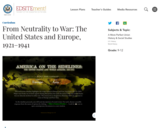
In the years after World War I Americans quickly reached the conclusion that their country's participation in that war had been a disastrous mistake, one which should never be repeated again. During the 1920s and 1930s"”recognized as the Interwar Period (1921-1939)"”U.S. officials pursued a number of strategies aimed at preventing war.
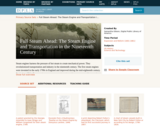
This collection uses primary sources to explore the steam engine and transportation in the nineteenth century. Digital Public Library of America Primary Source Sets are designed to help students develop their critical thinking skills and draw diverse material from libraries, archives, and museums across the United States. Each set includes an overview, ten to fifteen primary sources, links to related resources, and a teaching guide. These sets were created and reviewed by the teachers on the DPLA's Education Advisory Committee.

The Great Wall of China has 2,000-year history and runs over 3,000 miles over multiple provinces in northern China, making it one of the most spectacular historic constructions on the planet.

Through most of U.S. history, women had limited access to educational programs and extracurricular activities. Most women were excluded from elite academic institutions, and those schools that accepted female applicants required them to have higher test scores and grades than their male counterparts. In the 1960s and 1970s, civil rights activists advocated for federal enforcement of equal opportunities for male and female students. In response, Congress enacted Title IX of the Education Amendments of 1972. This unit asks students to consider the scope and application of Title IX through the examination of statutory text, federal regulations, enforcement policies, and court decisions. Students are guided to confront questions about how the provisions of Title IX ensure nondiscrimination on the basis of gender, and to think about what sex equality means across different contexts.
This unit contains 5 lessons:
Lesson 1: Conceptualizing Equality and Non-Discrimination
Lesson 2: Analyzing Title IX and Athletics
Lesson 3: Applying Title IX Beyond Sports
Lesson 4: Applying Title IX
Lesson 5: Reshaping Title IX
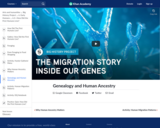
n this video, Henry Louis Gates, Jr., explains how three types of genetic tests helped him understand his own family history, and then goes on to explain how these same tests can help scholars reconstruct the past 60,000 years of human migration. Created by Big History Project.

An overview of how the Mongol Empire, founded by Genghis Khan in 1206, eventually becomes the largest contiguous empire in world history before splitting formally into the Yuan Dynasty, Golden Horde, Chagatai Khanate and Ilkhanate.

This Teacher Resource Guide is designed for incorporation into history and social studies curricula. It will introduce your students to some of the events and issues that shaped George Washington’s life. The activities should enhance your students’ knowledge of Washington and expand their horizons about this complex and interesting man.
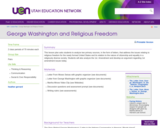
This lesson plan asks students to analyze two primary sources, in the form of letters, that address the issues relating to religious freedom for the newly formed United States and its relation to the nature of citizenship and equality in a religiously diverse society. Students will also analyze the 1st. Amendment and develop an argument regarding 1st amendment issues today.

One of the most significant documents in Constitutional History, George Washington's Farewell Address, is a letter written by the first American President, George Washington, with the help of Alexander Hamilton, to "The People of the United States." Washington wrote the letter near the end of his second term as President.

Three years before the United States entered World War II, President Roosevelt declared the South to be "the nation's number one economic problem." Georgia's economy was distinctly agricultural and low-wage, with little manufacturing compared with states in the North and Midwest. The median family income was nearly half of the national average. One year later, an influx of federal defense money established new industries, such as the Bell Aircraft plant in Marietta, and expanded existing ones, such as the J. A. Jones Construction Company in Brunswick. While 320,000 Georgians served in the United States Armed Forces, tens of thousands of Georgians repaired aircraft, built B-29 bombers, and worked in shipyards at home during the war. Meanwhile, military training was widespread throughout Georgia, occupying its fields as well as skies. Capitalizing on the state's flat coastal region and mild winters, Army airfields were installed in Savannah, Statesboro, Thomasville, and Waycross, and pilots trained in Albany, Augusta, Americus, and Douglas. Thousands of soldiers passed through Fort Benning and Fort Oglethorpe, where members of the Women's Army Corps trained for positions at home and abroad. World War II employment was crucial to the economic development of the state, ushering in the transformation to a modern, industrial, and diverse Georgia. This exhibition was created as part of the DPLA's Public Library Partnerships Project by collaborators from the Digital Library of Georgia and Georgia's public libraries. Exhibition organizers: Mandy Mastrovita and Greer Martin.
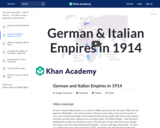
Italian and German Empires in 1914. Tsingtao beer. Created by Sal Khan.

This video segment, adapted from NOVA, chronicles the education of leading chemist Percy Julian. Although Julian began his elementary school years in the Deep South under Jim Crow laws, he became one of the few African Americans of his time to earn a Ph.D.

This activity is designed to help students get to know the Representatives serving their district in the U.S. House of Representatives. Students will be tasked with researching and analyzing the political background, voting history, and floor activities of the Representatives serving several local districts.